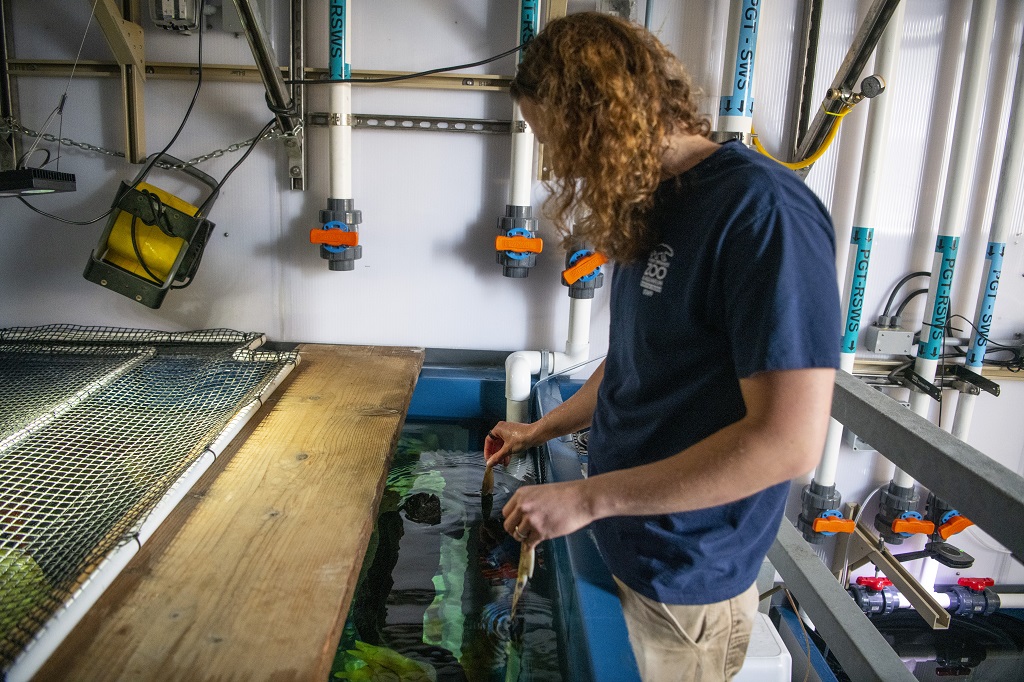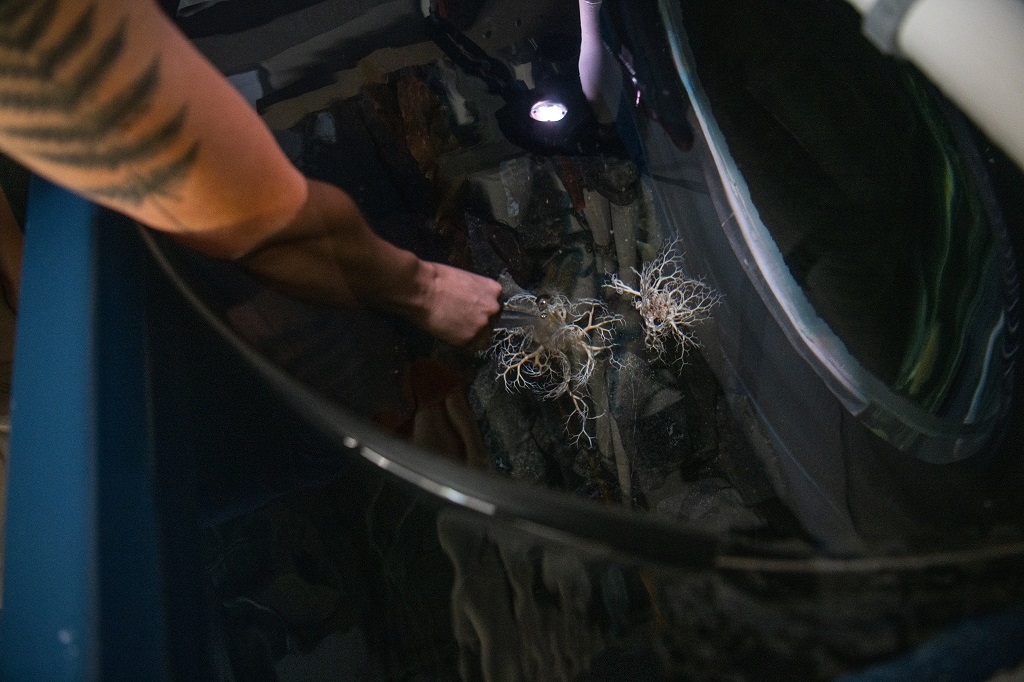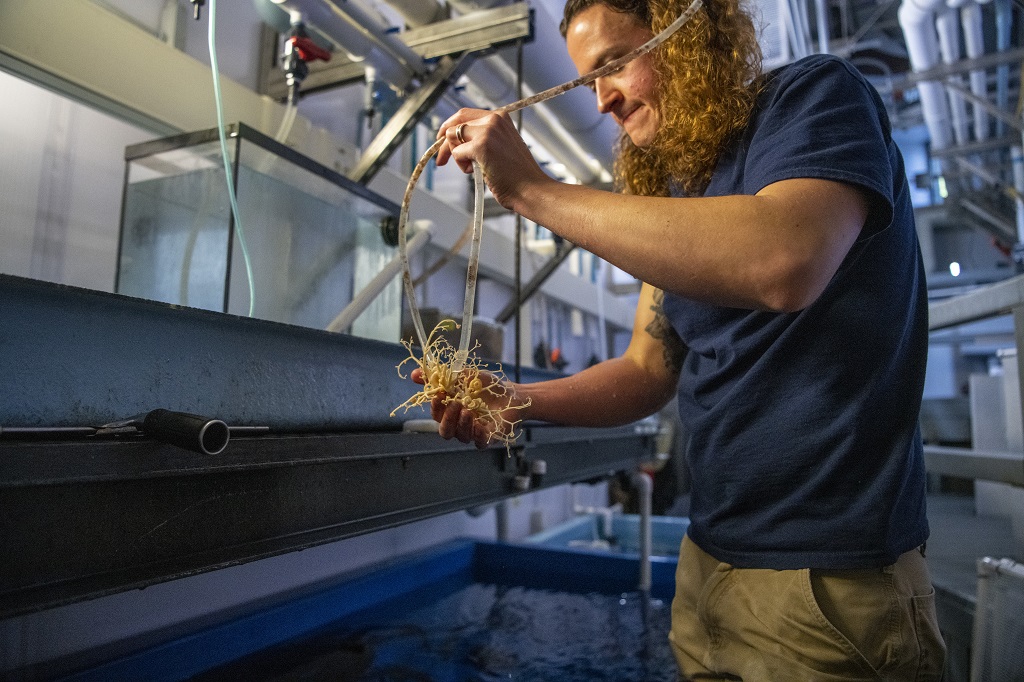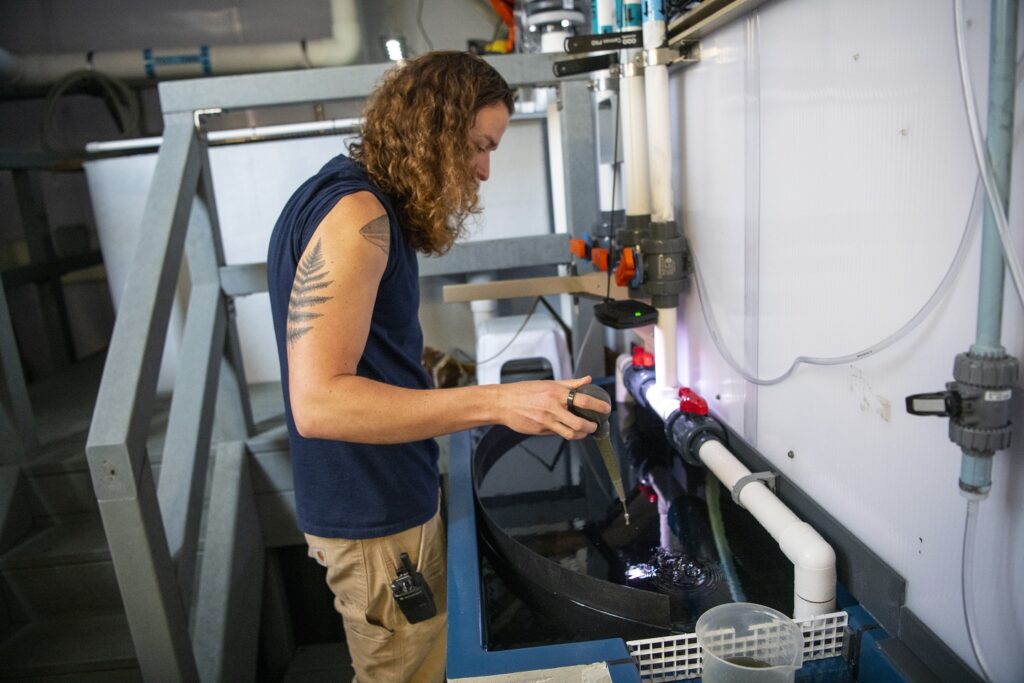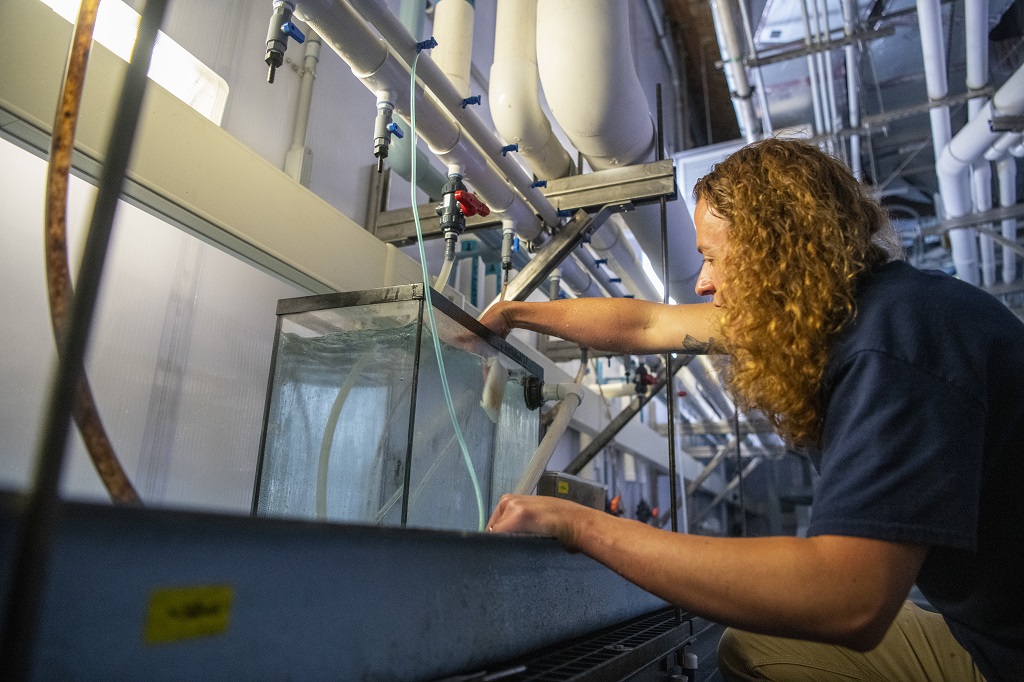This Zookeeper Week, we shadowed Mark, an aquarist at Point Defiance Zoo & Aquarium. Mark works with the animals in the Pacific Seas Aquarium. We asked him about his experiences as an aquarist and what working with aquatic species means to him.
Q: What is your favorite part of the job?
A: There are a lot of different animals to work with, and there are always things to learn and explore. I’m excited by the opportunities to do research because many of these animals remain pretty mysterious, and there is still a lot to learn. The basket stars, for example, are deep-water species that are difficult to locate and study in the wild. We can discover new things about them and participate in research by having them here in the aquarium and observing them closely.
Q: What is your favorite animal at the Zoo?
A: That’s a tricky question, and it’s changed over time. I’m currently fascinated with the basket stars and the sea pens. A long-term fish I’ve enjoyed is the grunt sculpin; we have one, and he’s pretty wild. They have adapted to look like a barnacle and live in barnacles. They will even stick their fins out and move them in a way that mimics a barnacle’s movement. I find that fascinating.
Q: What was your journey to becoming a keeper? What inspired you to become a keeper?
A: I took a marine biology class in college that shifted my focus away from the business degree I was initially pursuing. My first job was at a local small marine lab. I moved around a bit, working at aquariums in North Carolina, Oregon, and Utah. I got experience with Pacific, Atlantic, and Indo-Pacific species. Then I came back to Point Defiance to work with cold water invertebrates. The Pacific Northwest and invertebrate life around here are amazing.
Q: What does your day typically look like?
A: We always start the day with checks; we check to ensure every animal looks healthy and look for signs of disease, injury, or general unwellness. If you see something out of the normal, like a fish that looks sick, that will change the course of the day. If everything looks good, we prepare food, clean the aquarium habitats, and begin the morning feeding. Cleaning a habitat will often require a dive. In the Baja Bay habitat we dive twice a week to clean it. In the middle of the day, we will work on projects like modifying the tanks, changing lighting, fabricating the backgrounds, and helping with research projects. We end the day the same way we start it, with habitat checks and general detail-oriented observation of all the animals.
Q: What is something people wouldn’t expect about your job?
A: People would be surprised about the number of things we do. I often find myself plumbing, working on life support systems, and fabricating and setting up aquariums. Working as an aquarist is not just feeding the animals and cleaning. When it comes to aquarium habitats, we also need to be artistic and creative. A guest once referred to the exhibits as “3D living paintings,” and I like that. We want to tell an educational story and ensure that the animals we put into each habitat will get along. But we also want to make each exhibit visually appealing and engaging for our guests.
Q: What advice would you give someone who wants to be a zookeeper?
A: Stay flexible. Have a goal but be ready to shift it based on what you discover about your strengths and interests. I’ve moved around a lot, and it’s given me experiences with different species, which has been very valuable. Constantly studying, researching, and being fascinated by your intended field is essential. It boils down to putting in a lot of time and staying curious.
